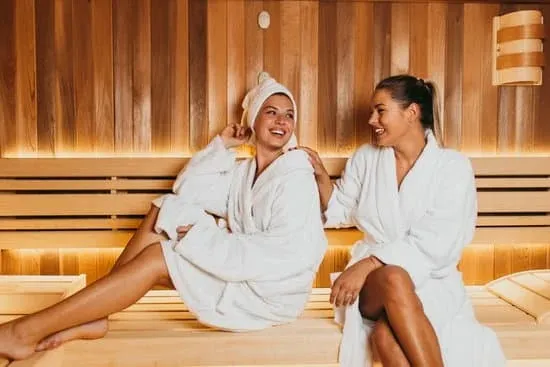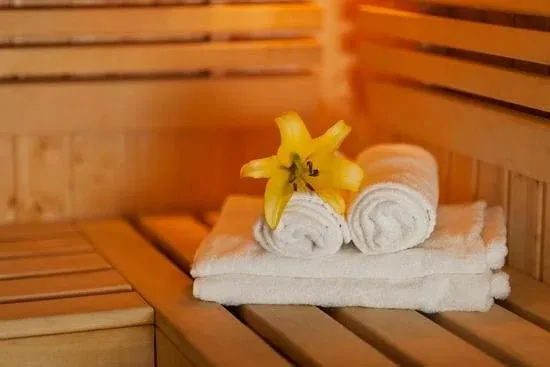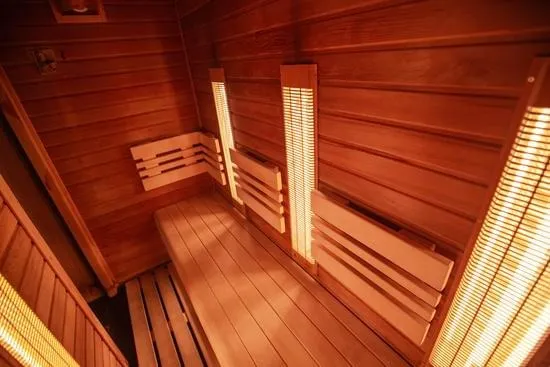Two-Person Indoor Sauna Guide: Best Options for Couples
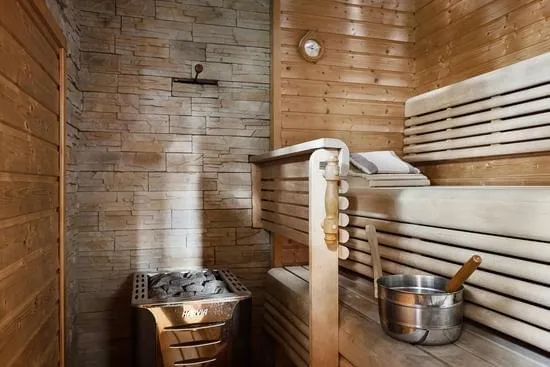
There's something magical about sharing wellness experiences with someone you care about. After helping hundreds of couples select their perfect sauna, I've seen how a two-person indoor sauna transforms from a personal luxury into a shared ritual that strengthens relationships while improving health.
In this comprehensive guide, I'll walk you through everything you need to know about selecting, installing, and enjoying a two-person sauna in your home. Whether you're a couple looking to enhance your wellness routine together or a family wanting flexibility in usage, this guide will help you make the perfect choice.
Why Choose a Two-Person Sauna?
The decision between a one-person and two-person sauna extends beyond just physical space. A two-person unit offers compelling benefits that make it the most popular choice for home installations.
Shared Wellness Experience
Sauna sessions become quality time together, creating space for conversation and connection without the distractions of daily life. Couples report that their regular sauna sessions strengthen their relationship, provide a tech-free zone for genuine conversation, and create a shared commitment to health that motivates both partners.
Beyond romantic partnerships, two-person saunas work beautifully for parent-child bonding, sibling relationships, or close friends. The key is having someone to share the journey with.
Better Value Proposition
While a two-person sauna costs more upfront than a single unit, the value equation shifts when you consider the benefits. You're getting nearly double the capacity for just 50-70% more cost, allowing both people to enjoy benefits simultaneously rather than taking turns, and actually improving cost-per-use over the sauna's lifetime.
Think of it this way: if you were both going to a sauna spa three times weekly, that's six individual sessions. With a two-person home sauna, you're getting six person-sessions from three actual uses. The cost efficiency becomes compelling quickly.
Flexibility for Future Needs
Life changes, and a two-person sauna adapts. It accommodates guests who want to experience your sauna, provides extra room for stretching during solo sessions, offers space for children as they grow, and ensures sufficient capacity if you move to a larger home.
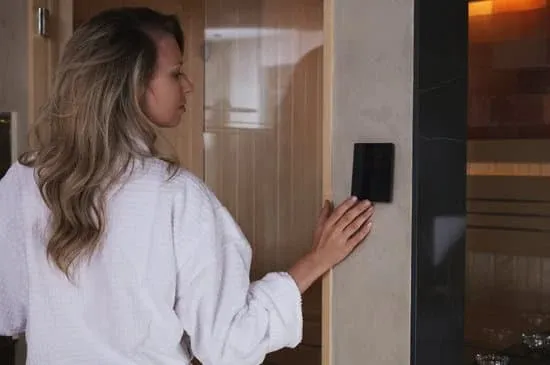
Understanding Two-Person Sauna Dimensions
Size matters significantly when it comes to comfort and practicality. Let's break down what "two-person" really means in the sauna world.
Standard Dimensions
Most two-person saunas fall within these typical measurements:
- Width: 48-60 inches (4-5 feet)
- Depth: 48-60 inches (4-5 feet)
- Height: 75-79 inches (6.25-6.5 feet)
- Interior bench width: 16-20 inches per person
- Total footprint: 16-25 square feet
These dimensions create comfortable seating where two adults can sit side-by-side or across from each other without feeling cramped.
Seating Configurations
Side-by-Side Layout: The most common design features a single bench running along one wall. This creates an intimate setting perfect for couples, maximizes usable space efficiency, and allows both users to face the same direction (relaxing for many people). However, it can feel close for those who prefer more personal space.
L-Shaped Configuration: Benches along two perpendicular walls offer more personal space while still being together, and allow users to face each other or sit at angles. This provides excellent flexibility for different preferences and slightly increases the total footprint needed.
Corner Units: These triangular or diagonal designs fit efficiently into room corners, often provide more interior space than rectangular footprints, and can accommodate 2-3 people depending on size. They're ideal for maximizing awkward room layouts.
Types of Two-Person Saunas
Understanding the different sauna types helps you match the right technology to your preferences and budget.
Infrared Two-Person Saunas
Infrared saunas have become the dominant choice for home installations, and for good reason. Learn more about the technology in our complete infrared sauna guide.
How They Work: Carbon or ceramic panels emit infrared waves that directly heat your body rather than the air, operating at lower ambient temperatures (120-140°F) while providing deeper tissue penetration.
Benefits for Two People: Quick heat-up time (15-20 minutes) means less waiting, lower operating temperatures allow longer, more comfortable sessions together, and quiet operation facilitates easy conversation. Energy efficiency keeps costs manageable and simple 120V or 240V electrical requirements work in most homes.
Cost Range: $2,000-$5,000 for quality two-person infrared saunas, with premium models featuring chromotherapy lighting, sound systems, and superior wood quality commanding higher prices.
Traditional Two-Person Saunas
Traditional Finnish-style saunas use electric or wood-fired heaters to warm rocks, which then heat the air to high temperatures (150-195°F). For a detailed comparison, see our article on traditional vs infrared saunas.
Unique Advantages: Authentic sauna experience with the option for löyly (steam from water on hot rocks), higher temperatures appeal to purists and those who enjoy intense heat, and the social tradition of traditional sauna culture.
Considerations: Longer pre-heat time (30-45 minutes), higher electrical requirements (often need 240V dedicated circuit), increased operating costs, and typically more expensive installation. Price range for two-person traditional saunas: $3,500-$8,000+.
Hybrid and Steam Options
Some manufacturers offer hybrid saunas combining infrared and traditional heating, or steam sauna capabilities. These provide ultimate flexibility to choose your experience each session, but come at premium prices ($5,000-$10,000+) with more complex installation and maintenance requirements.
Key Features to Look For
Not all two-person saunas are created equal. Here's what separates exceptional units from mediocre ones:
Quality Construction
Wood Selection: The wood species dramatically affects durability, aesthetics, and maintenance needs.
- Canadian Hemlock: Most affordable option ($$$), light color, minimal odor, good durability
- Canadian Red Cedar: Mid-range pricing ($$$$), beautiful reddish color, natural aromatherapy, excellent durability, naturally resistant to moisture and insects
- Nordic Spruce: Premium option ($$$$$), traditional Finnish choice, very durable, pleasant light scent
Joinery and Assembly: Look for tongue-and-groove construction for superior insulation and stability, pre-fabricated panels that snap together (easier installation), solid corner posts and reinforcements, and quality hardware (stainless steel preferred).
Heating Elements
For infrared saunas, the heater quality determines effectiveness and longevity. Premium carbon fiber panels provide even heat distribution, long lifespan (15+ years), and low EMF emission. Ceramic heaters offer good heat output, proven reliability, and slightly lower cost. Budget tube heaters work but provide less even heating and shorter lifespan.
Panel Placement: Full-spectrum heating requires panels on all sides (back, sides, front, sometimes floor and ceiling). Look for models with 5-7 heater panels for optimal two-person coverage.
Comfort Features
Bench Design: Ergonomic contouring reduces pressure points during longer sessions. Adequate width (16-18 inches minimum per person) allows comfortable sitting. Backrests provide crucial support for relaxation.
Lighting: Chromotherapy (color therapy) lighting enhances the wellness experience. Dimmable options let you control ambiance. LED technology keeps energy use and heat output low.
Audio Systems: Built-in Bluetooth speakers eliminate the need for external devices. Quality sound enhances relaxation through music or meditation. Some models include charging ports for devices.
Control Systems
Modern saunas offer sophisticated controls: digital touchscreen interfaces, smartphone app connectivity for remote start and monitoring, programmable sessions with saved preferences, precise temperature control (typically 1-degree increments), and timer functions with auto-shutoff for safety.
Safety Features
Never compromise on safety. Essential features include automatic shut-off timers (usually 60 minutes maximum), overheat protection sensors, low EMF certification (infrared models), tempered glass doors with safety locks, proper ventilation systems, and certified electrical components (UL, ETL, or CE listed).
Space Planning and Installation
Proper installation ensures safety, performance, and longevity of your investment.
Location Selection
Ideal Locations in Your Home:
Master Bathroom: Most popular choice for several reasons - proximity to shower facilities, existing water-resistant flooring, usually has adequate electrical access, and privacy for couples. Ensure the bathroom is large enough (typically need 10x10 feet minimum to comfortably accommodate sauna plus other fixtures).
Spare Bedroom: Transforms an underused space into a home spa, provides ample room for larger two-person units, and offers privacy and quiet. Consider adding a small sink or having bathroom access nearby.
Finished Basement: Often has available space for installation, cooler ambient temperature can be advantageous (less AC needed), and good location for home gym integration. Verify ceiling height (need 80 inches minimum) and moisture levels (must be dry environment).
Home Gym or Dedicated Wellness Room: Creates an integrated health and fitness space, allows for longer sessions without disrupting household flow, and can include complementary equipment (yoga area, massage chair, etc.).
Electrical Requirements
Most two-person infrared saunas require dedicated circuits. Understanding your needs prevents expensive surprises.
120V Models (1500W or less): Plug into standard outlets, no special wiring needed, and ideal for apartments or homes where 240V isn't available. However, they heat more slowly (20-30 minutes pre-heat) and may have slightly lower maximum temperatures.
240V Models (2000-3000W): Require dedicated 20-30 amp circuit, faster heat-up time (15-20 minutes), higher maximum temperatures, and more efficient operation. Professional electrician needed for installation ($200-$600 depending on circuit run distance).
Ventilation Considerations
Proper airflow prevents moisture buildup and ensures comfort. Requirements include adequate room ventilation (bathroom fan or window), leaving clearance around sauna (6 inches minimum on accessible sides), and never fully enclosing the sauna in a sealed closet. Some saunas include built-in vents; others rely on room ventilation.
Flooring Requirements
The sauna base must be stable and level. Best flooring options include tile or stone (ideal - heat resistant, water resistant, easy to clean), vinyl or laminate (acceptable - use heavy-duty quality, ensure heat resistance), and sealed concrete (works well, especially in basements). Avoid carpet (harbors moisture and odors) and unsealed wood (warps and degrades from temperature fluctuations).
Cost Analysis for Two-Person Saunas
Understanding total ownership costs helps with realistic budgeting.
| Expense Category | Cost Range | Notes |
|---|---|---|
| Infrared Sauna Unit | $2,000-$5,000 | Most popular choice for homes |
| Traditional Sauna Unit | $3,500-$8,000 | Higher upfront and operating cost |
| Delivery | $100-$300 | Varies by location and weight |
| Electrical Installation | $200-$600 | If 240V circuit needed |
| Professional Assembly | $200-$500 | Optional; many DIY successfully |
| Accessories | $100-$300 | Towels, thermometer, sand timer, etc. |
| Monthly Electricity | $15-$30 | Based on 3-4 sessions weekly |
| Annual Maintenance | $50-$100 | Cleaning supplies, minor repairs |
Long-Term Value Calculation
Consider the value against alternatives. A premium infrared two-person sauna at $4,000 total investment breaks down as follows:
- Average lifespan: 15-20 years
- Cost per year: $200-$265
- Cost per month: $17-$22 (plus $15-30 operating costs)
- Cost per session (8 sessions monthly): $4-$6.50 per couple session
Compare this to sauna spa visits at $30-$60 per session, gym memberships with sauna access at $50-$150 monthly, or wellness spa packages often costing hundreds per month. The home sauna pays for itself within 1-3 years for regular users.
Making It Work for Your Relationship
A two-person sauna succeeds when it becomes part of your shared routine. Here's how to maximize the relationship benefits.
Creating Rituals
Weekly Wellness Dates: Schedule regular sauna sessions as quality time together, perhaps Sunday evenings to prepare for the week, or Friday nights to decompress and transition into the weekend. Consistency builds anticipation and strengthens the habit.
Conversation and Connection: Use sauna time for meaningful discussions, leaving phones and distractions behind. The relaxed state promotes openness and vulnerability, making it easier to discuss important topics or simply enjoy each other's company without interruption.
Complementary Practices: Consider following sauna sessions with cool showers together, post-sauna meditation or stretching, or healthy smoothies or herbal tea. These extensions amplify the wellness benefits and extend your quality time together. Sauna sessions can also enhance skin health and serve as powerful stress relief.
Respecting Different Preferences
Partners may have different heat tolerances and preferred session lengths. The solution is starting at lower temperatures and gradually increasing, alternating who controls temperature on different days, one partner using towels to insulate more or less, and respecting when someone needs to exit early.
Remember: the goal is enjoying the experience together, not matching exactly the same tolerance levels.
Solo Sessions Are Valid Too
While you bought a two-person sauna, solo sessions remain valuable for personal reflection time, accommodating different schedules, and allowing each person space for individual wellness practices. A two-person sauna simply gives you the flexibility to choose shared or solo experiences.
Maintenance and Care
Proper maintenance extends your sauna's lifespan and ensures optimal performance.
After Each Session
Quick post-use care takes just two minutes: wipe down benches with a dry towel to remove sweat, leave the door open for 10-15 minutes to air out, and check that controls are off and timer has reset.
Weekly Maintenance
Dedicate 10-15 minutes weekly to vacuum the floor and corners to remove dust and debris, wipe interior walls with a slightly damp cloth, clean the glass door inside and out, and inspect electrical connections and heater panels visually.
Monthly Deep Cleaning
Once monthly, use a mild soap solution (no harsh chemicals) on all wood surfaces, clean chromotherapy lights and speakers, check door seals and hinges, and verify that ventilation areas are clear.
Annual Professional Service
Consider having a professional inspect the unit yearly, checking electrical connections thoroughly, testing all heater panels for even performance, examining structural integrity, and replacing any worn components proactively.
Common Questions from Couples
Temperature Preferences Differ?
This is the most common concern. Solutions include starting at the lower preferred temperature and gradually increasing if both are comfortable, the heat-sensitive partner using a damp towel around their neck and head for cooling, positioning differently (cooler near the door, warmer further back), and alternating who chooses the temperature on different days. Most couples find a comfortable middle ground within a few sessions.
Privacy in Shared Spaces?
If your sauna is in a bathroom or bedroom that others might access, add a door lock or use a "sauna in session" sign, schedule sessions when you have home privacy, or use robes or towels if modesty is a concern during setup. Most couples find their comfort level increases rapidly as sauna sessions become routine.
What If Schedules Don't Align?
Life happens, and schedules conflict. Solutions include aiming for 2-3 shared sessions weekly (still valuable), enjoying solo sessions when needed, using weekends for longer, more relaxed sessions together, or setting phone reminders for your scheduled sauna times. The flexibility of home ownership means you're not wasting money on unused spa memberships.
Upgrading and Future Considerations
As your wellness journey evolves, you might consider enhancements.
Popular Additions
Enhanced Audio Systems: Premium Bluetooth speakers or even waterproof audio systems transform the experience. Costs range from $100-$500 depending on quality.
Advanced Chromotherapy: Upgrading basic lighting to full-spectrum color therapy with programmable sequences. Adds $200-$600 to initial costs but enhances the therapeutic benefits.
Smart Home Integration: Connect your sauna to home automation systems for voice control, scheduled pre-heating, and energy monitoring. DIY costs $50-$200 or integrated systems $300-$800.
When to Size Up
If you find yourselves saying "we need more space," are having friends or family interested in joining, have added children to the family who want to participate, or use the sauna daily and want more stretching room, it might be time to consider upgrading to a three or four-person model. The good news: quality saunas retain resale value well, often selling for 50-70% of original price in good condition.
Making Your Decision
After covering all these factors, here's a simple framework for your decision.
Choose a Two-Person Infrared Sauna If:
- You're a couple wanting regular wellness time together
- You have 30-35 square feet of available space
- You want lower operating costs and quick heat-up
- Your budget is $2,500-$5,000 total investment
- You prefer moderate temperatures (120-140°F)
- You value quiet operation for conversation
Choose a Two-Person Traditional Sauna If:
- You want the authentic Finnish sauna experience
- You prefer very high temperatures (150-195°F)
- You enjoy löyly (steam from water on rocks)
- Your budget accommodates $4,000-$8,000+ investment
- You can wait 30-45 minutes for pre-heating
- You have 240V electrical access readily available
Consider Alternatives If:
- Space is extremely limited: See our small space solutions guide
- You're unsure about commitment: Consider portable options first
- Budget is very tight: Start with a one-person unit and upgrade later
- You want maximum flexibility: Review our comprehensive buying guide
Final Thoughts
A two-person indoor sauna represents more than just a wellness investment—it's a commitment to shared health, quality time, and creating a sanctuary within your home. The couples I work with consistently report that their sauna becomes one of their favorite features of their home, a place where stress melts away and connection deepens.
Whether you choose an infrared or traditional model, the most important factor is that you'll actually use it. Choose based on your real lifestyle, not idealized aspirations. A modest sauna used three times weekly beats a premium unit gathering dust.
The right two-person sauna will adapt to your lives, providing relaxation after stressful days, quality conversation time away from screens, therapeutic heat for sore muscles, and countless hours of shared wellness experiences for years to come.
Ready to take the next step? Contact us for personalized recommendations based on your specific space, budget, and wellness goals. Let's find the perfect two-person sauna for your home.
Ready to Share the Wellness?
Find the perfect two-person sauna for you and your loved ones. Get expert guidance tailored to your needs.
Frequently Asked Questions
A typical two-person sauna requires 4-5 feet wide by 4-5 feet deep, totaling about 16-25 square feet of floor space. Add at least 6 inches clearance on all sides for ventilation and access.
Two-person infrared saunas typically cost $2,000-$5,000 compared to $1,500-$3,000 for one-person units. Operating costs are similar ($15-30 monthly) as heating requirements don't significantly increase with modest size differences.
Yes! Quality two-person saunas provide comfortable seating for two average-sized adults with proper bench design. Look for models with at least 48 inches of bench width and adequate headroom.
References
- American Heart Association. "Cardiovascular Benefits of Sauna Use"
- National Fire Protection Association. "Electrical Safety Standards for Home Saunas"
- Journal of Human Kinetics. "Effects of Regular Sauna Bathing on Health and Wellness"


